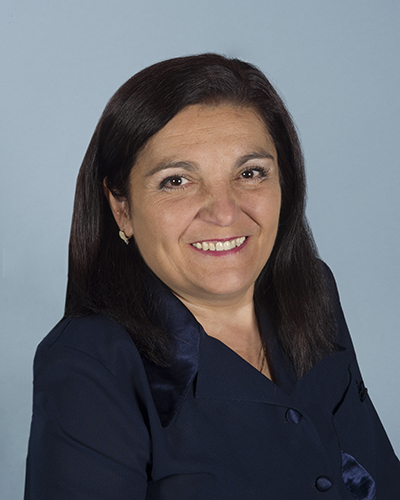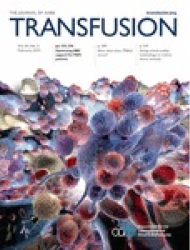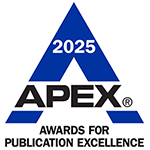
How long have you been an AABB Member?
I am a new AABB member (only a year), but I work for a facility that has been an institutional AABB member since 2005, so I have been involved for about twenty years. I am familiar with the accreditation process and standards for relationship testing.
Tell us a bit about yourself.
I was born in Sofia, Bulgaria, and graduated from Sofia University. I have been happily married for 32 years and have one adult daughter. I love to travel any time I can. In addition, I love to read and learn new things. I am also a cat person, but I love all creatures.
Tell us a little about the facility where you work.
The CCRFSL Parentage and ID Unit was established to address the Cuyahoga County Medical Examiner’s needs to identify human remains using DNA relationship testing. The unit was first accredited by AABB in 2007. Throughout the years, the CCRFSL Parentage & ID Unit has proven to be instrumental in the identification of the decedents received by the Cuyahoga County Medical Examiner’s Office. One of the well-known cases handled by the unit includes 11 victims of the serial killer Anthony Sowell in 2009.
The unit currently offers relationship testing to the public as well. In addition, the CCRFSL is part of the medical examiner’s office. The laboratory is accredited by ANSI National Accreditation Board (ANAB) in forensic testing in the disciplines of biology, bloodstain patterns analysis, firearms and toolmarks, friction ridge, impressions, materials (trace), seized drugs and toxicology.
Who or what has influenced your career path?
My career started at the medical and molecular genetics clinical laboratory in Indiana University Perdue University in Indianapolis. The laboratory performed testing for genetic diseases, as well as paternity testing using restriction fragment length polymorphism in the beginning, and short-tandem repeats later. The laboratory director at that time was Dr. Marion Hodes, who was an outstanding medical scientist and a teacher. He was the one that “infected” me with the “curious scientist” bug.
During that time, I discovered that human genetics offers vast potential in medicine, biology and biotechnology in the future. And I want to say that the future didn't disappoint.
How did you first get involved with AABB?
I first got involved with AABB in 2005 when I joined Strand Analytical Laboratory's paternity testing team. The paternity unit was accredited by AABB for relationship testing, and I had to prepare the unit for the external AABB audit.
You are a contributor to the first module of the AABB Relationship Testing Statistical Calculation Training, focusing on parentage calculations. Can you tell us a bit about this module? How did you become involved in this project?
The training is designed to educate forensic analysts and other laboratory scientists involved in human genetics testing about another aspect of our genetic information (our genetic profiles) relationship testing. The modules will explain statistics behind how we calculate and measure our “relatedness.” I became involved in this project as a member of the AABB Relationship Testing Accreditation Committee, which was tasked with developing this educational program.
I like to teach and share my knowledge in the field of relationship testing.
Why do you think these training modules are needed/how will they benefit the field?
The first module will explain the basics of relationship testing, such as maternity and paternity calculations. As we progress in the training, we introduce more complex family pedigrees and address some of the challenges in the field, such as the number of true mutations and testing people with chimeric DNA.
How will they address some of the current challenges in the field?
It will help us understand specifics of relationship testing, its benefits and limitations using current technology. I hope this learning program will spark enough interest in somebody’s young mind, and they will decide to work in the field of relationship testing and human identification. Hopefully they will use their knowledge to find solutions for old and new challenges.
What is something AABB members working in other areas would be surprised to learn about your job?
Relationship testing is used for human identification as well. In the medical examiner’s office, we often use DNA relationship testing for identification purposes. It is very rewarding and fulfilling to give closure to the families of the decedents.
What are you most excited to work on in the next year?
We are currently working on some identification cases, and I am very excited about the conclusion. We are also working on some “old” cases. I do not call them “cold” because in our field of human identification, there are no “cold” cases. We continuously try new available technologies. The field of human identification is changing very fast, and I cannot wait for what is next.

The new AABB Relationship Testing Statistical Calculation Training program seeks to educate laboratory scientists and forensic analysts on the statistical methods used to determine genetic parentage and other familial relationships. This self-paced, multi-media online training includes the following three units:
This course is offered through AABB’s Education Platform and is part of the ongoing Relationship Testing Statistical Calculation Training series currently in development. Discounted pricing is available for organizations wanting to purchase four or more registrations. Visit the course page to learn more.
BACK TO ISSUE
May 2025
Transfusion is AABB’s scholarly, peer-reviewed monthly journal, publishing the latest on technological advances, clinical research and controversial issues related to transfusion medicine, blood banking, biotherapies and tissue transplantation. Access of Transfusion is free to all AABB members.
Learn More About Transfusion Journal
Keep abreast of what's happening in the field of biotherapies with CellSource - AABB's monthly update on the latest biotherapies news.
To submit news about the blood and biotherapies field to AABB, please email news@aabb.org.
President
Meghan Delaney, DO, MPH
Chief Executive Officer
Debra Ben Avram, FASAE, CAE
Chief Communications and Engagement Officer
Julia Zimmerman
Director of Marketing and Communications
Jay Lewis, MPH
Managing Editor
Kendra Y. Mims, MFA
Senior Communications Manager
Drew Case
AABB News
(ISSN 1523939X) is published monthly, except for the combined November/December issue for the members of AABB; 4550 Montgomery Avenue; Suite 700 North Tower; Bethesda, MD 20814.
AABB is an international, not-for-profit association representing individuals and institutions involved in transfusion medicine, cellular therapies and patient blood management. The association is committed to improving health by developing and delivering standards, accreditation and educational programs that focus on optimizing patient and donor care and safety.
+1.301.907.6977
Email: news@aabb.org
Website: www.aabb.org
Copyright 2025 by AABB.
Views and opinions expressed in AABB News are not necessarily endorsed by AABB unless expressly stated.
Notice to Copiers: Reproduction in whole or part is strictly prohibited unless written permission has been granted by the publisher. AABB members need not obtain prior permission if proper credit is given.
